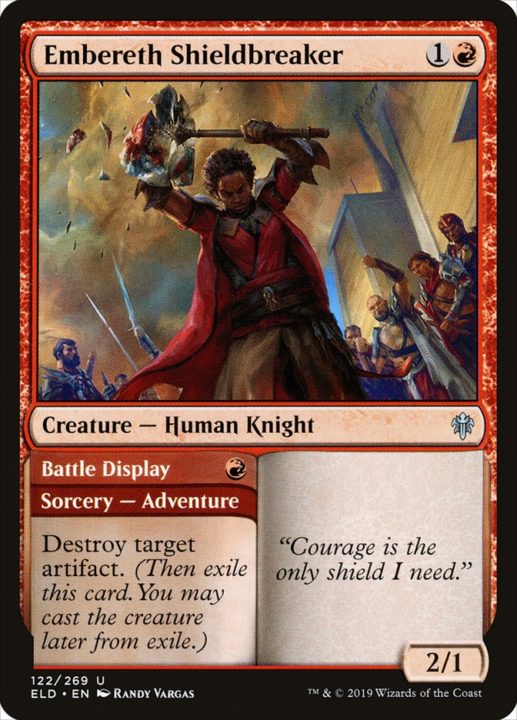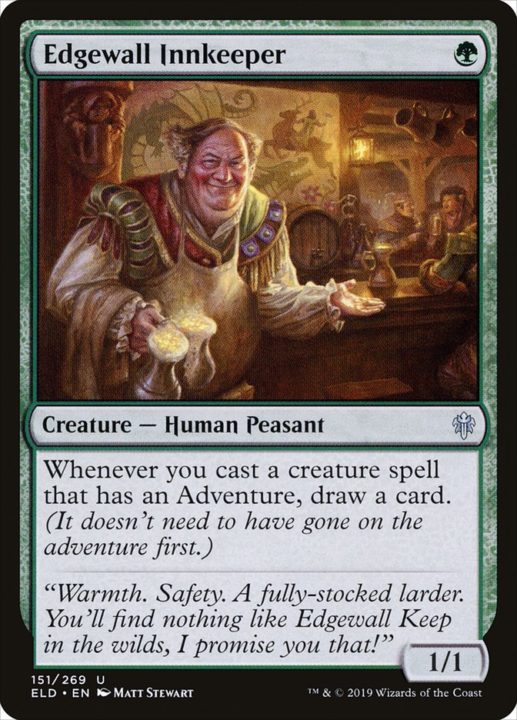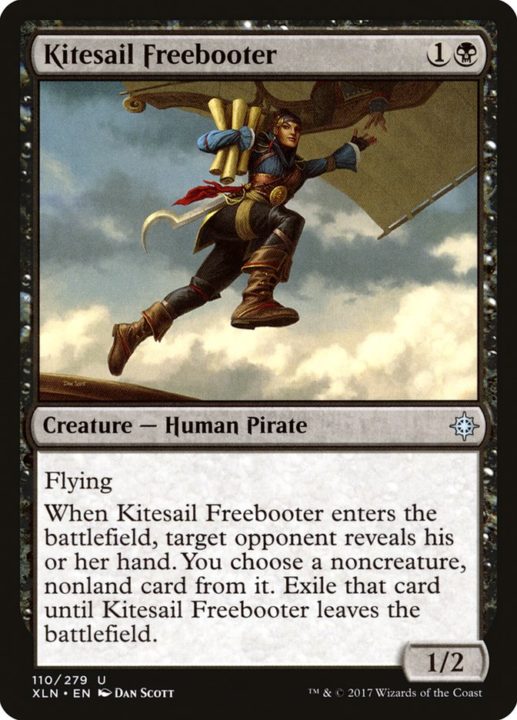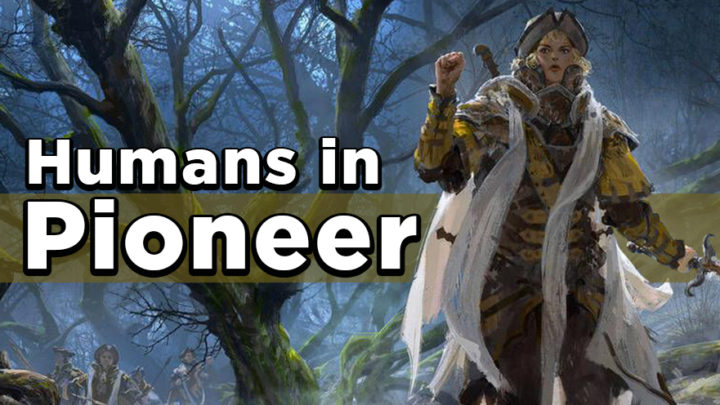At Players Tour Nagoya, I played Five-Color Humans. This probably wouldn’t seem odd if you assumed I was playing Modern, but no — I played Five-Color Humans in Pioneer. So, why did I register a Modern deck that was missing half its cards in a Pioneer tournament?
At the start of my testing, I didn’t know what was good. I wasn’t happy with Mono-Red, since it was at essentially the same power level it had been in various Standard formats. Heliod decks necessitated too many weak support cards to make Heliod good. Originally, I leaned toward Mono-Green Ramp, but as the format came into focus, Cavalier of Thorns seemed less important. Five-Color Niv had so many mana issues and below-rate cards that Niv-Mizzet couldn’t carry the entire deck.
At one point, I tried to build a Paradox Engine combo deck. Without a cheap mana artifact like Mind Stone or a reason to play Paradox Engine over Kethis in an Emry deck, I turned to Springleaf Drum and Edgewall Innkeeper. The deck wasn’t good enough, but Innkeeper put me in positions where I could have won if only I could utilize it better. So, I started building an Innkeeper deck.
Building the Deck
Innkeeper and a few of the Adventures were Humans, so I tried them with cards from Modern Humans: Thalia’s Lieutenant, Mantis Rider, Reflector Mage. The deck had an aggressive game plan and could effectively generate card advantage while disrupting the opponent. Pioneer is full of slow decks that can defend against typical linear aggro decks but fold to flyers and interaction. In Pioneer, Mantis Rider and other cards in Humans line up surprisingly well.

Naturally, I ran into problems while testing the deck, but found the solutions I was looking for in the format. I was missing an analogue for Champion of the Parish, one of the most important cards in Modern Humans. And then I realized I had one: Experiment One! I needed another aggressive one-drop and a card that was good against Five-Color Niv; Soldier of the Pantheon was both of those. I needed a way to beat Blue/White Control, and Selfless Spirit alone wasn’t enough. As it turned out, my mana could support adding black for Kitesail Freebooter, which could also invalidate Wrath effects.
Usually, a new deck runs into a fundamental problem holding it back — a weak spot it can’t fill with the cards available. That hole wasn’t there this time.

Once I had a solid idea of what I wanted to do, I consulted with friends to refine the deck. The list didn’t change much during this period, but I was forced to defend my card choices and consider other options. The biggest change was putting three copies of Shepherd of the Flock back in the main deck. While Embereth Shieldbreaker had been more successful for me in testing, Shepherd was clearly the more powerful card. I suspected my lack of success with Shepherd was largely due to user error; I was trying to invalidate my opponents’ removal when I should have been attacking for lethal instead.
I just needed to figure out my last two sideboard slots. I considered spells like Flicker of Fate to fight Inverter, and a testing partner eventually recommended Gideon of the Trials. Playing Gideon without the mana to consistently cast it was a risk; ultimately, I think I should have played more than twelve white sources or avoided playing him at all. I also could have played Rest in Peace instead of Tormod’s Crypt, or given Deputy of Detention a try.

With that said, I am otherwise very happy with the list I ended up with:
5-Color Humans
4 Edgewall Innkeeper
1 Embereth Shieldbreaker
4 Experiment One
4 Giant Killer
4 Kitesail Freebooter
4 Lovestruck Beast
4 Mantis Rider
4 Reflector Mage
3 Shepherd of the Flock
4 Soldier of the Pantheon
4 Thalia’s Lieutenant
2 Botanical Sanctum
2 Concealed Courtyard
2 Hallowed Fountain
2 Inspiring Vantage
4 Mana Confluence
3 Stomping Ground
1 Temple Garden
4 Unclaimed Territory
Sideboard:
2 Devout Decree
3 Embereth Shieldbreaker
2 Gideon of the Trials
1 Plains
4 Selfless Spirit
3 Tormod’s Crypt
How to play the deck
Like Modern Humans, I tend to mulligan for a one-drop with this deck. I prefer to start with Experiment One, Edgewall Innkeeper, or Soldier of the Pantheon, although Lovestruck Beast is also fine. The only way to push through lethal without a lot of pressure is Mantis Rider, so it’s important to stay ahead on board. There are several ways to capitalize on early pressure and close out a game, including Mantis Rider, Lovestruck Beast, Reflector Mage, and Giant Killer. Just make sure you limit your opponent’s outs or their ability to stabilize their life total.
Key cards

Edgewall Innkeeper wouldn’t be very good in Modern Humans. It’s weak against fast combo decks, the control decks are too good at punishing your low card quality and matching you on efficient card advantage, and Lovestruck Beast is a bad defensive card. But in Pioneer, Innkeeper and the Adventures line up much better against the field. This alternative to Thalia, Guardian of Thraben and Meddling Mage is fairly good at answering most decks in the format.

Mantis Rider is the main reason to stretch the deck’s mana. It’s difficult to maintain a tempo advantage against a Mantis Rider without directly answering it, especially when you back it up with other aggressive creatures.

Kitesail Freebooter is often one of the weakest cards in the deck, but it’s good in a lot of match-ups that would be difficult otherwise. Playing four Freebooters means four answers to Wrath effects in the main deck and eight after sideboarding.
Sideboarding
UW Control
+4 Selfless Spirit
+1 Plains
–4 Reflector Mage
–1 Hallowed Fountain
UB Inverter
+2 Gideon of the Trials
–1 Reflector Mage
–1 Embereth Shieldbreaker
5c Niv
+4 Selfless Spirit
–2 Reflector Mage
–1 Embereth Shieldbreaker
–1 Shepherd of the Flock
Mono-Black Aggro
+2 Devout Decree
+2 Embereth Shieldbreaker
+1 Plains
–4 Kitesail Freebooter
–1 Concealed Courtyard
The Embereth Shieldbreakers are a replacement for Kitesail Freebooter and a way to deal with Aethersphere Harvester.
Mono-Black Vampires
+2 Devout Decree
+1 Plains
–1 Embereth Shieldbreaker
–1 Kitesail Freebooter
–1 Mana Confluence
I’m less opposed to Kitesail Freebooter here, since Sorin is the best card in their deck. I cut Mana Confluence because there’s less of a need to cast the adventures on Lovestruck Beast and Embereth Shieldbreaker than there is against Mono-Black Aggro.
Mono-Red
+2 Devout Decree
+1 Plains
–1 Embereth Shieldbreaker
–2 Mana Confluence
I would board the same way against both Mono-Red Aggro and Big Red with my current sideboard.
GB Stompy
+3 Embereth Shieldbreaker
+1 Plains
–4 Kitesail Freebooter
UW Spirits
+1 Plains
+4 Selfless Spirit
–4 Kitesail Freebooter
–1 Concealed Courtyard
Bant Spirits
+1 Selfless Spirit
–1 Embereth Shieldbreaker
Going Forward
Unfortunately, my tournament didn’t go well. The hours I put into building a new deck meant I didn’t spend much time learning how to draft the new set, and I went an unsightly 0-2-1 in my first draft. After playing very poorly in a loss to Big Red in the first round of Pioneer, my weekend was over.
Magic isn’t just about how the tournament went, though. It’s also about whether the choices you made in preparing for the tournament were better or worse than the choices the rest of the field was making. My poor preparation for draft hurt my chances at a good record there a lot, but I feel good about where I ended up for Pioneer. I went into the tournament having found an aggressive deck that could dismantle other aggressive decks like Mono-Black and Ensoul and had enough powerful curve-outs and disruption that I wasn’t heavily disadvantaged against anything. I would estimate my deck was 55% against the field, which is a pretty good place to be for a PT.
I think Humans has the tools to be a great deck in Pioneer, and I expect I’ll consider it for other tournaments in the future.

Felix Sloo, also known as “xfile,” is a Magic Online grinder known for his innovative deck-building. Though he tends to play popular decks like Simic Urza, Hogaak, and Sultai Food, he earned his first Grand Prix Top 8 at MagicFest Portland 2019, where he was the only player in the tournament to register Leyline Prowler.

